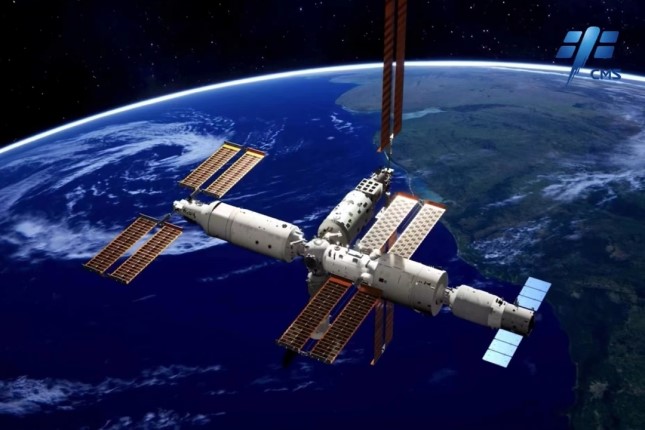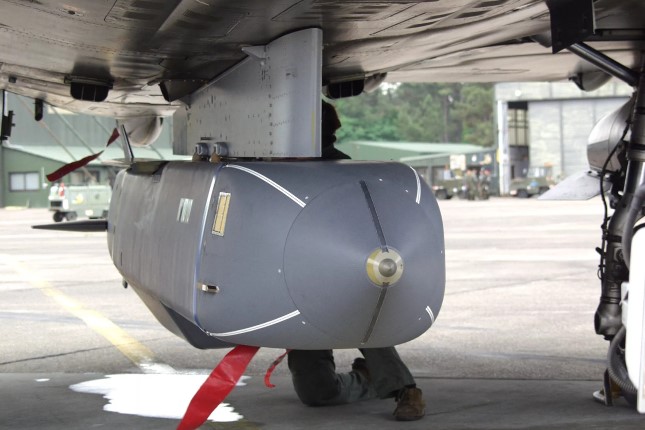The third and final part of the three-module China Space Station's basic structure - made a rendezvous and docked with the Tianhe space station core module at 4:27 am on Tuesday, about 13 hours after being launched, according to the China Manned Space Agency (CMSA).
The new space lab module docked with the Tianhe at the core module's forward docking port in a steady and highly precise fashion. Next, the Mengtian module will execute a transposition in orbit, and join with earlier modules - the Tianhe core module and Wentian lab module - to complete the T-shape structure for the China Space Station, read a statement the CMSA provided to the Global Times on Tuesday.
"Only when the three modules complete their assembly and form the T-shape structure in orbit, can we declare that we have achieved all preset goals. Only when they complete the T-shape basic structure, can the power supply, information and thermal control systems deliver their best performances and support relatively larger experiments," Bai Linhou, deputy chief designer from the space station system at the China Academy of Spacecraft Technology (CAST), told the Global Times, explaining why the feat was of great significance in the overall building of the China Space Station.
After completing the building of the China Space Station, six taikonauts of two Shenzhou manned spaceflight crews will carry out the first-ever direct handover in orbit.
The Guided Navigation and Control System (GNC), developed by Institute 502 of the CAST, played a crucial role in addressing two major challenges the Mengtian module faced during the docking maneuver, said Song Mingchao, chief designer of the space station lab modules.
The power generated by the Mengtian's solar panels was not enough to make up for the energy used in the process, meaning that if the maneuver could not be completed within the designated time, the automated rendezvous and docking process would have to be called off, and the attitude of the Mengtian would need to be changed to let it face the Sun to generate power, which was the first and most dangerous challenge, according to Song.
Another challenge was that since the earlier modules had formed an L-shape asymmetric combination, it increased the difficulty in controlling the combination's attitude.
Technicians at the CAST formulated special emergency response plans to cope with any malfunction during the process, and the GNC system accurately identified the relative attitude between the Mengtian and the Tianhe-Wentian combination, ensuring the success of the "space kiss."
The successful docking of the Mengtian proved again the high reliability of China's space technology, the CAST institute said.
The Mengtian, weighing more than 23 tons at launch, was the heaviest spacecraft China has ever launched. According to Liu Guoning, deputy chief designer of the scientific cabinet system at the Chinese Academy of Sciences (CAS)' Technology and Engineering Center for Space Utilization, it will be China's largest comprehensive space experiment platform within the next decade.
The CAS loaded eight scientific experiment cabinets inside the Mengtian module, covering fields including the basic physics of microgravity, space materials science, microgravity fluid physics as well as combustion science, Liu revealed.
The CAS scheduled some 40 scientific experimental projects in these fields, and they will be carried out in accordance with the overall plan.
Liu said that "the scientific experiments set to be carried out inside the Mengtian lab module are expected to enable scientists to conduct cutting-edge studies and get world-class findings."
According to the Shanghai Academy of Spacecraft Technology, the main contractor and developer of the Mengtian module, there are 13 scientific cabinets inside the craft to hold scientific equipment.
It also carries 37 extravehicular payload installation sites capable of carrying scientific experiments that need to be exposed to the space environment, cosmic rays, vacuum and solar winds.
For the first time in China's aerospace history, the Mengtian carries a subsystem for short message communication services empowered by the home-developed BeiDou Navigation Satellite System (BDS).
According to mission insiders, the subsystem comprises short message receiving and sending antenna and applications that are installed on portable terminals held by the taikonauts. It is the first-time application and testing of the BDS system in the China Space Station.
The subsystem will allow taikonauts to communicate with their families with short messages and voice messages at any time, and it will also serve as an emergency link with the ground when other communication routes malfunction.
Bai revealed that the China Space Station is drafting cooperation standards for rendezvous and docking as well as payload installation onboard.
"The China Space Station will always be an open platform for global cooperation, and China is drafting cooperation standards, for rendezvous, docking and payload installation, which will be released to the whole world," Bai noted.
Photo: Simulated image of Mengtian docking with China Space Station combination © CMSA.
Source: The Global Times.
































